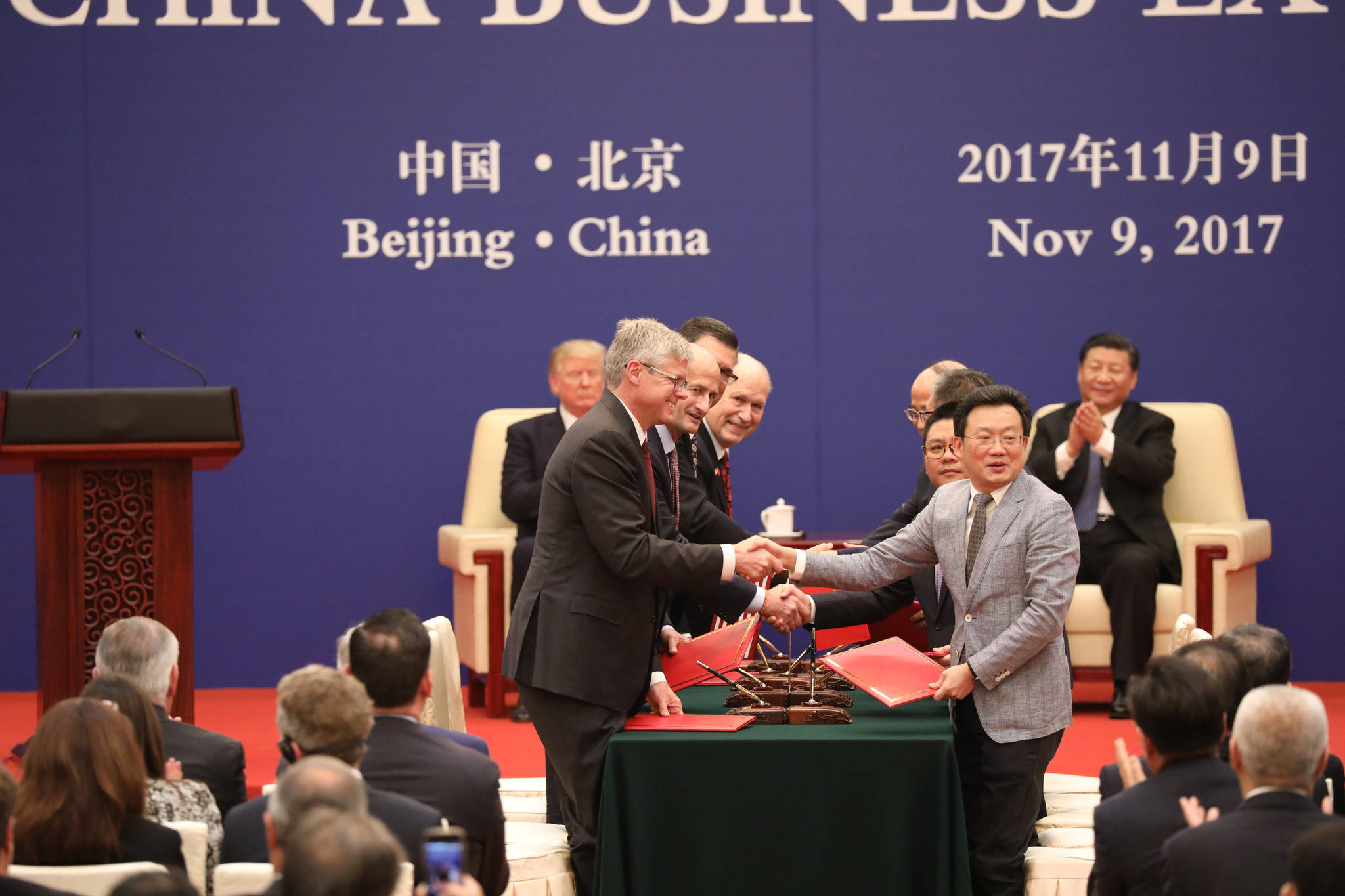When Gov. Bill Walker announced a gas pipeline deal last week, we felt something we haven’t experienced in a long while: Hope.
The $43 billion arrangement signed in Beijing is a long way from having a gas pipeline in hand, but it makes us optimistic about the future.
Over the past year, we’ve been battered by an unrelenting flurry of bad news. We’ve seen economic recession, a serious crime wave, an opioid epidemic, outmigration from the state, climate change, and a homelessness crisis — and that’s talking just about Alaska.
Things outside the state haven’t been much better.
Thanks to Alaska’s budget crisis, we’ve seen Walker knock out the state’s plans for the future, like a farmer plowing a field of green shoots.
The Juneau Access Project is gone. So are the Susitna-Watana dam, the notion of a small-scale gas pipeline, and the Knik Arm bridge. Alaska’s spaceport is limping, and so is the effort to build a road to Kotzebue.
The virtues of each of those projects are debatable, and we won’t go into them. What all of them offered, however, was economic hope. Large and awkward they might have been, but they were signs that Alaska was thinking for the next 50 years, not the next 50 months.
The latest trans-Alaska gas pipeline seems to be headed along the same path as Juneau Access. Last year, experts from Wood Mackenzie, the global experts in energy markets, told the Alaska Legislature that the trans-Alaska gas pipeline doesn’t make economic sense right now.
The only way the project makes sense, those experts said, is if the state could find someone who puts a monetary value on non-monetary things, like Alaska’s political stability.
The “big three” North Slope oil companies didn’t think Alaska could find that partner. They have pulled out of the pipeline project.
Walker stuck to it, even when legislators considered pulling the funding for the pipeline project earlier this year.
Now, he may be vindicated. It’s too early to tell for certain, but the Chinese government may be willing to be Alaska’s partner in the pipeline. It has diplomatic interests and leverage that others don’t. It may be willing to pay more, under the right circumstances.
The deal signed last week calls for a year of investigation on both sides. China needs to investigate whether the pipeline works for it. Alaskans need to investigate whether China’s offering matches what it wants. If things go well, December 2018 could be the month of decision for a China-Alaska deal.
There’s a long year separating us from that moment, and the deal could fall apart well before then, but we now have a rope of hope to pull us out of our well of despair.
We didn’t have that before.
Walker’s deal may not be worth $43 billion, but it’s still worth quite a bit.

